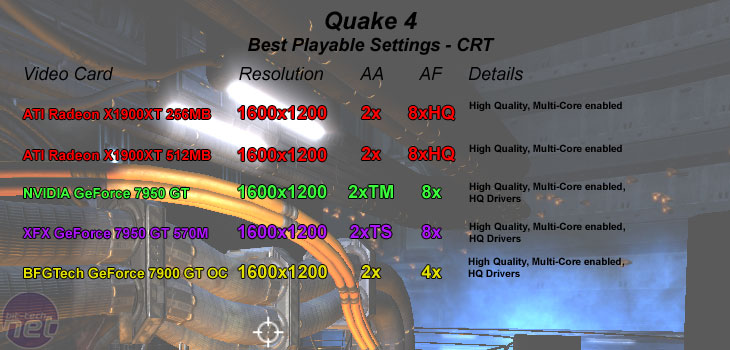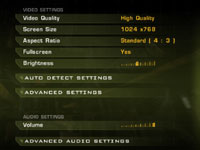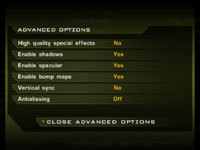CRT Gaming:
For gameplay evaluations on a 24" widescreen monitor, please head straight to our widescreen performance section.Quake 4
Publisher: ActivisionWe used the full retail version of Quake 4 patched to version 1.3.0. It is the fourth game in the Quake series, based on the technically sound Doom 3 engine. However, unlike Doom 3, we found that the game benefits from at least 2x anti-aliasing, and the experience with anti-aliasing at a slightly lower resolution was better than increasing the resolution with no AA applied.
Both anti-aliasing and anisotropic filtering were controlled from inside the game. When you select "High Quality" mode, 4xAF is automatically enabled, and when the "Ultra Quality" mode is enabled, 8xAF is automatically applied to the scene. We forced anisotropic filtering values via the console using "image_anisotropy".
We did a manual run through from a five minute section of the Nexus Hub Tunnels level and found that a minimum of 15 frames per second and an average of 45-50 frames per second in our test section was deemed to be playable across the rest of the title.


XFX's GeForce 7950 GT 570M Extreme was the best performer in Quake 4, while BFG Tech's GeForce 7900 GT OC delivered a very similar gaming experience to the two Radeon X1900XT cards on the image quality front. The positive being the fact that the 7900 GT OC didn't suffer from the stuttering issue.

MSI MPG Velox 100R Chassis Review
October 14 2021 | 15:04








Want to comment? Please log in.